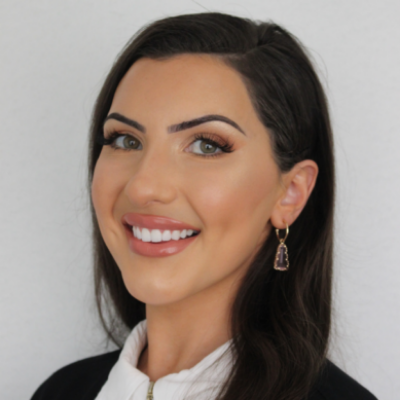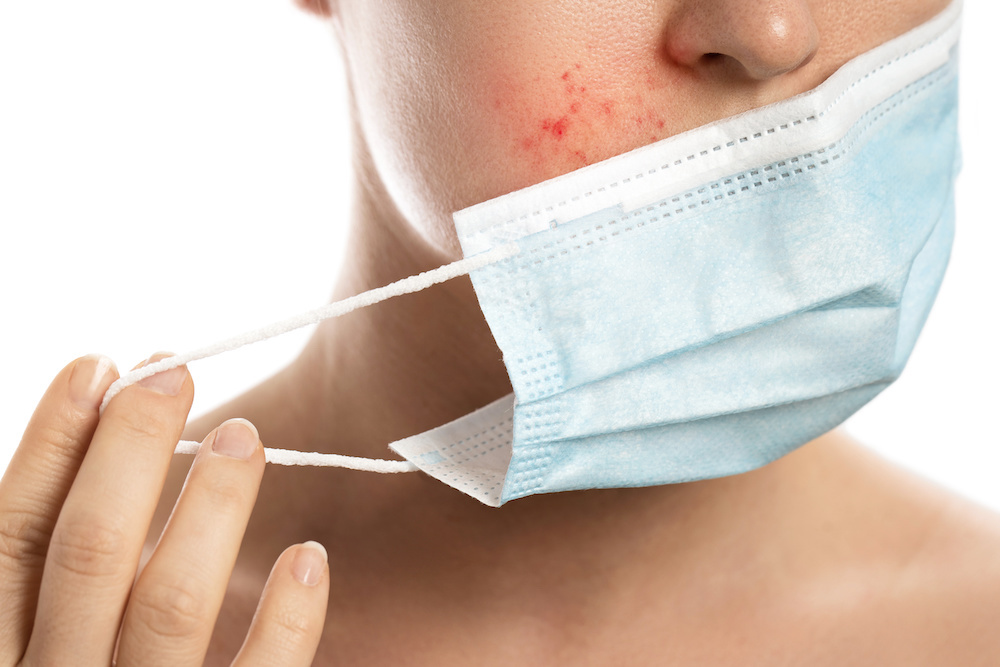Top tips to avoid acne breakouts caused from wearing a face mask.
Acne is a very common skin problem affecting 80% of the population worldwide in some form. Acne has never been more prevalent than now due to the use of compulsory face masks in Victoria. Individuals who have never had a concern with their skin before are now finding that they are experiencing acne breakouts. This is due to an inevitable build-up of bacteria on our mask and the humid and sticky environment it creates, that then causes congestion and breakouts especially on the lower half of the face.
There are many types of acne. The most common is called acne vulgaris. Another common form is called acne rosacea (or adult acne). Acne is the most commonly diagnosed skin disorder and the number one reason patients visit a dermatologist. Almost everyone goes through a period of acne at one time or another.
Top tips to avoid acne breakouts caused from wearing a face mask:
- Disposable masks should only be worn for 4 hours at a time then replaced with a new clean mask.
- Re-usable or fabric masks should be washed at the end of every day.
- Do not throw your mask into your hand bag where it can pick up further bacteria. Alternatively place it in a zip lock bag before putting it into your hand bag or glove box.
- Avoid heavy makeup under your mask as this will only further block your pores and result in congestion.
- Be sure to thoroughly cleanse your skin every morning and night.
- Be mindful of what detergents and fabric softeners you are using when washing your fabric masks, as some may be causing you further irritation. Fragrance free is best.
What are pimples?
Pimples are an inflammatory form of acne that is characterised by excess oil (sebum) production, blocked pores, inflammation of surrounding skin and bacterial activity.
What causes acne?
Just beneath the surface of the skin lie hundreds of tiny oil producing glands called sebaceous glands. Their function is to collect and excrete an oily substance called sebum to keep the skin healthy.
What are the main factors that contribute to acne breakouts?
- Enlargement of the oil producing (sebaceous) glands in the skin and excessive oil (sebum) production resulting in greasy skin and large pores.
- Blockage of the tiny pathway (duct) that takes the sebum from the sebaceous gland to the skins surface.
- An overgrowth of acne bacteria inside the sebaceous glands. This bacterium is called Proprionibacterium acnes.
- Production of inflammatory products by the acne bacteria.
Why do we need to treat acne?
Physically acne can result in pain, skin damage and scarring.
Psychologically acne can have a devastating effect on a person’s self-esteem and is often a source of anxiety, low self-confidence and even depression. The aim of treatment is to suppress and clear acne and to prevent scarring.
Treatment is aimed at overcoming the main factors contributing to acne namely excess oil production, blocked oil glands, overgrowth of bacteria and inflammatory products.
How is acne treated?
Depending on the type of acne or congestion you are experiencing will determine what the best treatment option for you is. At GVSL we offer a complimentary Skin Analysis with a Dermal Therapist in order to tailor a treatment that is best suited to your concerns.
Combination therapies are generally the most successful approach to treating breakouts. This may include, chemical peels, microdermabrasions, extractions, laser, LED light therapy and a tailored skin care regime to be followed a home. Correct at home skin care is the most important factor in treating acne and will count for 70% of overall skin improvement. Active ingredients will be recommended to you and in some cases prescription strength topical or oral products may be prescribed by our in-clinic Doctors.
How is acne scarring treated?
The treatment of choice for scars resulting from past acne damage will depend on the type and severity of the scarring that has developed.
Treatment options range from surface treatments for superficial scars such as peels and micro-needling to treatments for deeper scars using advanced medical lasers such as the latest fractional laser technology.
Main factors to note about treatment of acne scarring
- There are different types of acne scars
- Different types of scars require different treatments
- Active acne needs to be controlled
- Scarring is often associated with pigmentation that needs treatment
What are the types of acne scarring?
There are various types of acne scars and many different methods of classifying them. Many patients have a combination of several different types of acne scars at the same time. Essentially acne scars can be considered to be either raised, flat or depressed.
Raised Scars
When acne causes raised scars, these may be either hypertrophic when they are enlarged but confined to original area of acne or keloid when the scarring extends beyond the original area of acne. The choice of treatment depends on how raised the scars are and can include local treatment such as corticosteroid injections or more generalised treatment such as ACUPULSE fractional laser treatment.
Flat Scars
Flat scarring also called macular scarring is largely a problem of pigmentation rather than changes in skin texture.
Initial treatment options include topical depigmenting creams such as hydroquinone or superficial peels. Resistant macular scarring often requires laser-based treatments in particular the REV-LITE laser which can target both pigmentation and scarring at the same time.
Depressed scars
Acne scars can cause various types of indentations in the skin such as rolling undulations (rolling scars) punched out depressions with sharp vertical edges (boxcar scars), deep scars with loss of subcutaneous tissue (deep divots) and deep small holes in the skin (ice pick scars).
If the depressions are very superficial then peels and microdermabrasion can be effective in smoothing the skin surface.
For deeper depressions where it is necessary to promote collagen production, the use of skin needling devices can provide very effective treatment with minimal downtime.
Certain types of severely depressed acne scarring may require surgery such as subcision which aims to release depressed scars from underlying structures and dermal filler to fill very deep scars that have lost supporting tissue. These treatments are performed by the skin doctors at GVSL.
If you are experiencing acne breakouts or have developed a form of acne during this time. Please visit us at Geelong Veins Skin & Laser for a complimentary skin analysis where product and treatment can be tailored to your concerns.
Authored by:

Charlotte Woolfe
